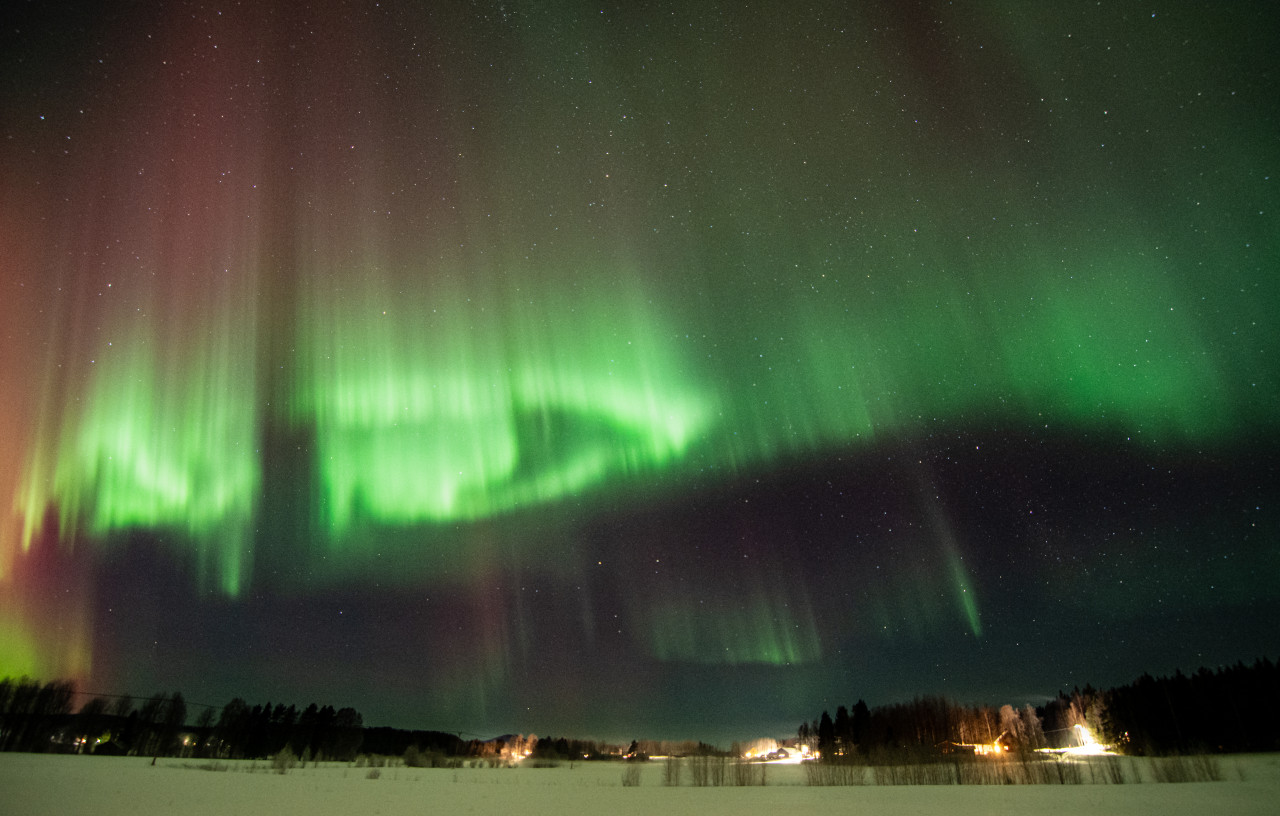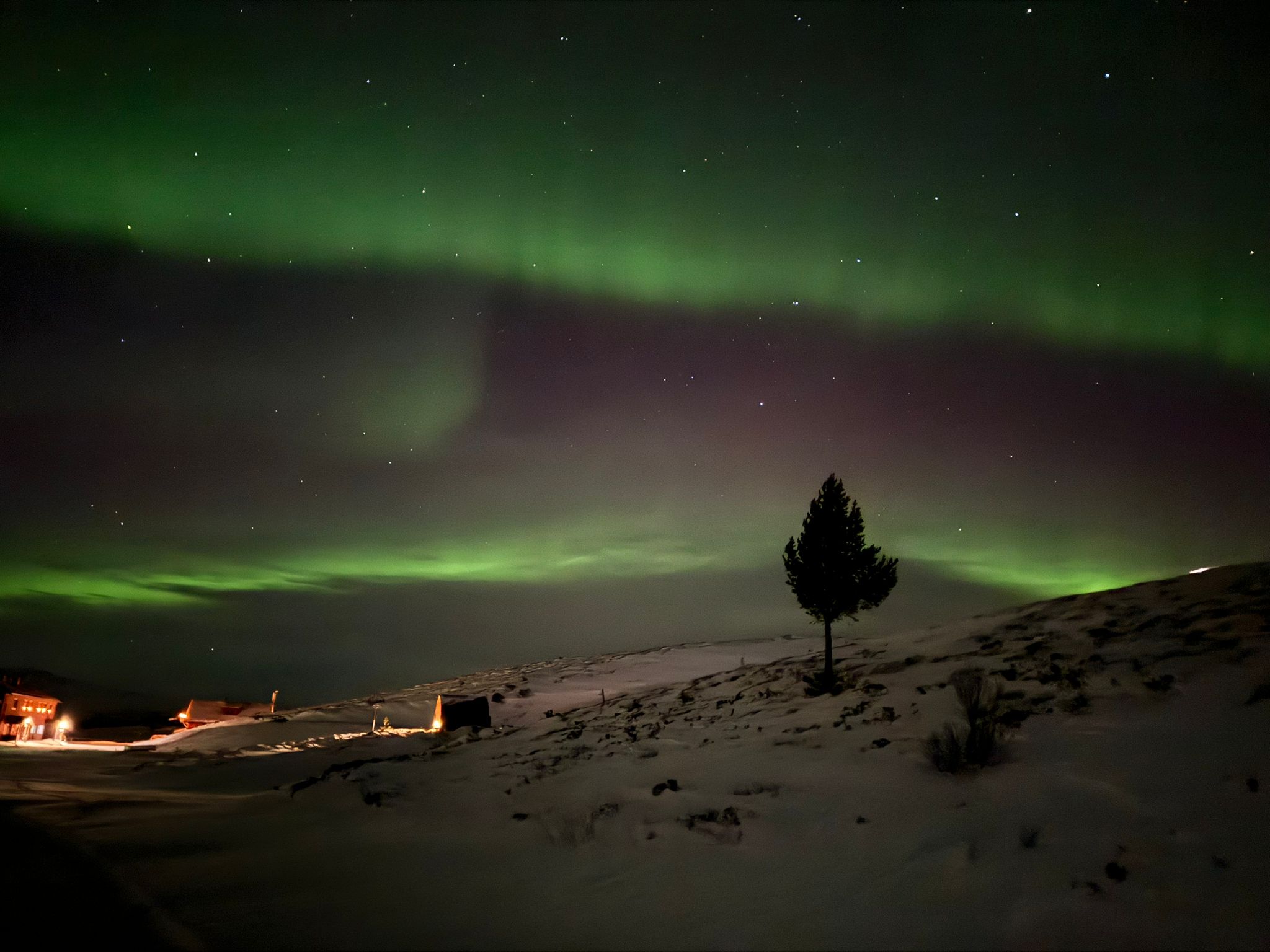 Mesmerising Northern Lights
Q.Elpers
Mesmerising Northern Lights
Q.Elpers
The Northern Lights, or aurora borealis, have fascinated humanity for centuries, inspiring awe, wonder, and countless stories. This blog dives into the science, cultural myths, and tips for capturing this mesmerising phenomenon. If you want to stack the odds in your favour you could consider our Finnmarksvidda Ski Crossing in the far north of Norway where the 'lights' are regularly on display.
The term aurora borealis was coined by Galileo in 1619, combining Aurora, the Roman goddess of dawn, with Boreas, the Greek god of the north wind. Scientifically, the lights result from charged solar particles colliding with Earth's atmosphere. These particles, drawn to the poles by Earth’s magnetic field, interact with gases like oxygen and nitrogen to produce vivid colours—red, green, and blue—depending on altitude.
Why Do Northern Lights Dance?
The auroras are best viewed in the polar regions within the "auroral zone," centered around 67° latitude.
Optimal Viewing Times:
Keep an eye on the KP Index, which ranges from 0 to 9, measuring geomagnetic activity. A value of 3 or higher suggests favourable conditions.
The Northern Lights have been interpreted differently across cultures, often reflecting deep spiritual significance:
These stories highlight humanity's profound connection to the auroras, blending wonder with cultural narratives.

The Northern Lights have been utterly amazing in Noway where Tracks and Trails Director, Lindsay Cannon Pearce has been out gazing in wonder at the night sky.
Whether you're using a DSLR or a smartphone, capturing the Northern Lights requires preparation and patience.
Camera Settings:
Smartphone Settings:
Stabilisation: Always use a tripod to prevent blurring during long exposures.
Apps like Aurora and Arcticans can help predict aurora activity.
Lindsay uses an Aurora App which predicts when the spikes will be, and when she gets an 'alert' she dashes outside to check if she can see any lightness in the sky. The first indication is often what simply looks like a band of cloud in the darkness. But this can often be the Aurora. Her top tip is to then take a photo and the colours and bands show up much clearer in the image than with the naked eye. Then as the Aurora strength increases she starts to see the colours first hand.
Did you know auroras aren’t limited to Earth? Jupiter and Saturn also host breathtaking auroras, driven by their powerful magnetic fields. These celestial light shows remind us that the phenomenon is a universal marvel.
The Northern Lights embody the intersection of science, mythology, and art. From their dazzling displays in the skies of the North to the echoes of ancient legends, they offer a magical experience for adventurers and dreamers alike. Whether you're seeking spiritual connection or a perfect photograph, the auroras promise an unforgettable journey.
As with all things in nature, sightings of the Northern Lights cannot be guaranteed. However, 2025 and 2026 mark the peak of the 11-year solar cycle, offering an excellent opportunity to witness this extraordinary phenomenon. Most of our winter holidays are set in Norway, providing an ideal backdrop to enhance your chances of experiencing the magic of the aurora.
Keep up to date with Tracks and Trails through our newsletter, click here to sign up. For more information about our cross country skiing holidays, either bespoke or Scheduled Departures, speak to one of our expert team by calling +44 (0) 20 8144 64442 or email This email address is being protected from spambots. You need JavaScript enabled to view it. In winter, in addition to cross-country skiing, we also offer snowshoeing, while in summer we would encourage you to join us for hiking, and trail running.
